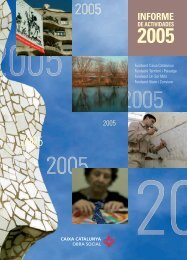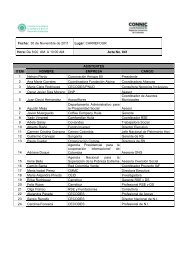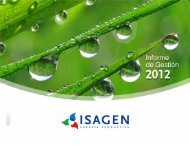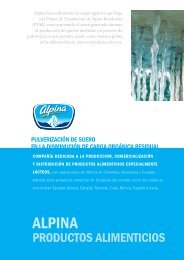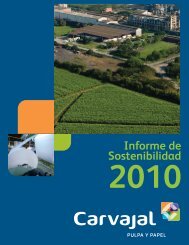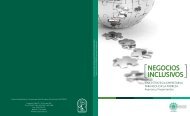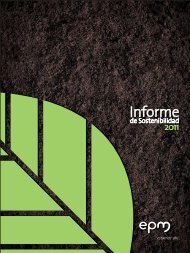Setting new standards - Friends Life
Setting new standards - Friends Life
Setting new standards - Friends Life
Create successful ePaper yourself
Turn your PDF publications into a flip-book with our unique Google optimized e-Paper software.
DIRECTORS’ REPORT<br />
CORPORATE GOVERNANCE REPORTS<br />
Risk management<br />
The Group seeks to take appropriate and managed risks in order<br />
to make superior returns for its shareholders and customers. The<br />
Board’s vision for risk management is an environment where<br />
business managers can take risks with confidence, and where<br />
consideration of risk is embedded into business planning,<br />
decision-making and everyday management. It seeks to have in<br />
place the people, processes and systems to:<br />
• identify and understand the risks facing the business;<br />
• select the appropriate risks to accept, and price correctly for<br />
them;<br />
• avoid, mitigate or transfer the inappropriate risks; and<br />
• monitor the business’s risk profile against agreed risk appetite.<br />
Risk appetite<br />
Risk appetite is an expression of the level of acceptable and/or<br />
unacceptable risk and is determined by the Board and senior<br />
management. The Group’s willingness to take on risk is set with<br />
reference to its capacity to bear risk. The Board has set risk<br />
appetite for the Group as a whole, and has approved more detailed<br />
appetite statements for the individual businesses. Qualitatively,<br />
risk appetite is set within a range from ‘risk seeking’ to ‘zero<br />
tolerance’, which varies according to the type of risk.<br />
Risk categorisation<br />
Risks are categorised as strategic, financial or operational. Details of<br />
specific risks currently facing the Group in the achievement of its<br />
strategy are given in the Annual Review on pages 15, 21 and 27.<br />
Strategic risks are those arising from the choice of a particular<br />
strategy, or with external forces acting to impair the Group’s ability to<br />
realise its strategy. The Board’s appetite for strategic risk varies from<br />
risk seeking, for example in relation to finding and exploiting <strong>new</strong><br />
applications of technology, to risk averse, for example in relation to<br />
actions or events that could damage the Group’s reputation.<br />
Financial risks arise from changes in financial risk factors and<br />
include credit, insurance, liquidity and market risks. The Board’s<br />
appetite for the different categories of financial risks can vary by<br />
risk type, by company within the Group and by the funds or assets<br />
concerned. More details of financial risk appetite are included in<br />
note 30 to the consolidated accounts.<br />
Operational risks can arise in the Group’s internal processes and<br />
systems, through its people or from external events. The Board<br />
aims to build an appropriate control environment to keep the<br />
exposure to operational risks in line with the agreed risk appetite,<br />
recognising that operational risks may arise in the normal course<br />
of business even when carried out in line with the Group’s policies<br />
and applicable regulation.<br />
Risk processes<br />
Operational risk is identified and evaluated within business units<br />
using a risk and control self-assessment process. Risks are<br />
recorded on an operational risk database, along with details of the<br />
controls in place to manage the risks and any remedial actions<br />
necessary to improve those controls. Risks are managed as<br />
closely as possible to the source of the risk.<br />
The strategic and financial risk processes are aligned to the<br />
business planning process, with risk being identified and evaluated<br />
in relation to the achievement of business objectives. The<br />
processes are run centrally by the Group Risk function in cooperation<br />
with key business units. Risks within business change<br />
activities are identified and evaluated by the management of the<br />
change programme both in relation to the delivery of the<br />
programme and in terms of the change programme’s effect on<br />
the business as a whole.<br />
Specific risk identification and assessment methodologies have<br />
been developed for merger and acquisition and strategic<br />
investment opportunities, <strong>new</strong> product developments and general<br />
project and change management programmes.<br />
The risk governance and management structures described below<br />
apply to all the risks facing the Group, including those that arise<br />
from social, environmental and ethical matters. More information<br />
about the Group’s performance in relation to these matters can be<br />
found in the Corporate Social Responsibility Report on pages 40<br />
to 43.<br />
<strong>Friends</strong> Provident Annual Report & Accounts 2006 53







